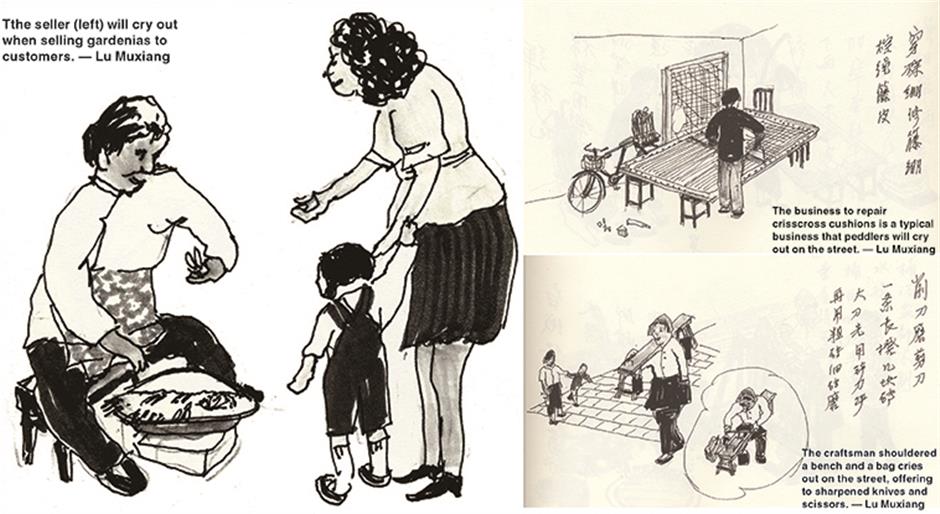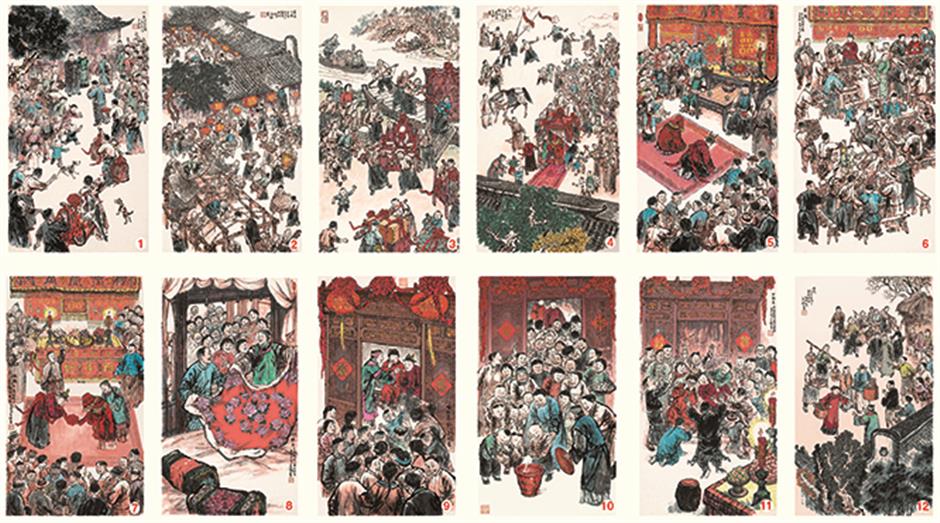Jiadingers keep ancient culture and customs alive

The scene of Qiuqiao Bridge and old houses at west Jiading
The rich culture and customs of Jiading have been systematically recorded since the times of the Ming Dynasty (1368-1644). Many of them still exist today.
Local history and customs in seasonal festivals, as well as important family occasions, were not only the epitome of society but also important to Jiading’s folklore and tradition.
Streets in the centuries old town used to echo with cries from peddlers, while the simple local toys and games produced would capture the imagination and creativity of Jiadingers.
These scenes are developing along with the times. Some of them have been passed down to the present, some are almost gone, but they are the most precious part of a Jiadinger’s memory.
In the encyclopedia of Jiading’s folklore, the people are well-versed in the culture and customs of their birthplace. These old stories are worth their weight in gold.
Jiading’s customs in seasonal festivals
One important document of Jiading’s folk culture and customs is the “picture record of Lianchuan” (one of Jiading’s former names), which keeps a complete archive of the seasonal customs from lunar New Year’s Day to New Year’s Eve.
In the olden days, the first thing to do on a lunar New Year’s Day was to pay respects to the family shrine. People kowtowed to heaven and earth first and then lit incense and deferred to the memorial tablets of their ancestors and specific deities. After that, they pay respects to their parents and other senior members of the family with New Year’s greetings.
The breakfast on that day was sticky rice balls with added brown and white sugar. The practice was only available in Jiading, with best wishes that all family members were peaceful, healthy and happy.
Neighbors and friends visited each other on the second and third day of the lunar New Year. At that time, juniors would bow to their seniors. Additionally, local families unlocked their gates after three days.
Folks in Jiading were also accustomed to weigh their children on the seventh day of the lunar New Year.
Like people in other parts of the country, Jiadingers made lanterns of all kinds and guessed riddles at the Shangyuan Festival or Lantern Festival, which falls on the 15th day of the lunar New Year.
Locals also conducted ceremonies at night, igniting a torch beside farmland to pray for harvest and removing insect pests. A hotchpotch, made of leftover food, was cooked to treat guests on that day. Ingredients included pakchoi, water chestnut, arrowhead, water caltrop, fried dough, pork and noodle.
In line with Jiading’s customs, the annual tomb sweeping was carried out ahead of the Qingming Festival, since the day after was called a “Day of Wandering.” After the “Day of Wandering” people could visit the cemetery if they hadn’t done it already.
At the beginning of summer, local farmers would gather wheat from neighbors and cook it as part of a ceremony to warn off summer diseases. It was also time to eat salted duck egg and loquat, as seasonal food.
The ninth day of the ninth month in lunar calendar is the Double Ninth Festival, during which Chinese people climb mountains, enjoy the beauty of chrysanthemums, eat cakes and wear a zhuyu flower, which is a Chinese herb.
People in Jiading usually climb Mount Yingkui and the northern hill in Qiuxia Garden, since most areas in Jiading are flat terrains. Cakes are also available to buy at local stores on that day.
In winter, congees made of beans, vegetables and even bacon are popular among locals. Stores start supplying Spring Festival goods, while it is also the right time to eat New Year cake.
Additionally, Jiadingers celebrate the Dragon Boat Festival, Double Seventh Festival, Mid-autumn Festival and Winter Solstice, as well as Chinese New Year’s Eve as important occasions.
Cries of peddlers

One-penny citizens’ life was always accompanied by a thick atmosphere of business. Some old streets in Jiading were full of all sorts of peddlers’ cries, but that is now long gone.
The most popular cries were always connected with sweetmeats and snacks. Cries for spiced olives, sugar fried almonds, spiced beans, sweet red bean soup and wonton soup always attracted people.
Craftsmen would also cry out and advertise their skills and offer to repair crisscross cushions, woks, bowls or sharpened knives and scissors.
Traditional toys
Jiadingers called toys “playing dogs.” Traditionally they were made from mud, paper, bamboo and other materials. Clay figurine, paper folding, cigarette cards, bamboo horse were among the most popular ones. Many locals also played billiards, walked on stilts, blew soap bubbles, skipped rubber band and played chicken versus eagle during childhood.
Marriage arrangement

Jiading’s traditional marriage arrangement has 12 steps.
Step 1
Family of the bridegroom sends pork, lamb, fish, goose, chicken and rice cake to the bride’s family as a gift.
Step 2
Families of both sides make preparations for the banquet one day ahead of the wedding.
Step 3
The family of the bridegroom will move the bride’s dowry from the living room of the bride’s home to the bridal chamber at bridegroom’s home.
Step 4
The bridegroom sends a bridal sedan chair, as well as a string and bamboo band, to pick up the bride. Fireworks are played when the bride arrives at the scene. Bridesmaids hold the bride in arms to walk through a red carpet to the living room of the bridegroom’s home. On some occasions, the bridegroom also needs to pick his brother-in-law.
Step 5
The bride and bridegroom kowtow to the bridegroom’s parents and other senior family members and are gifted red envelopes. The new spouse gives the seniors fruits and candies as present in return.
Step 6
The wedding banquet is held at night and the brother of the bride is considered as the most distinguished guest of the banquet.
Step 7
The wedding ceremony is the core of the entire process. The new spouse kowtows to heaven and earth first, then to the bridegroom’s parents and then to each other.
After that, surrounded by flower kids, the new couple shows themselves to guests at the scene and pay respect to their ancestors before they move to the bridal chamber.
Step 8
The bridegroom’s parents or other senior relatives make the bed for the new spouse.
Step 9
The new spouse sits on the edge of the bed and is fed sticky rice balls cooked with brown sugar as a best wish for a sweet future.
Step 10
A healthy and handsome boy is picked to urinate in the wooden toilet gifted by the bride in a wish that they will have more children.
Step 11
Friends and relatives haze newlyweds.
Step 12
The bride’s parents send greetings to the bridegrooms’ home the next day and invite newlyweds to visit them. The new spouse prepares a gift for the visit and is treated to another banquet.
















